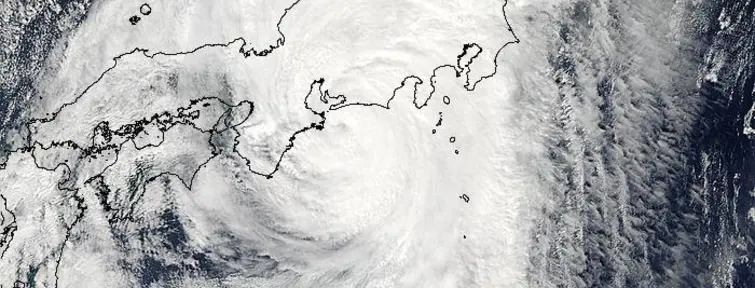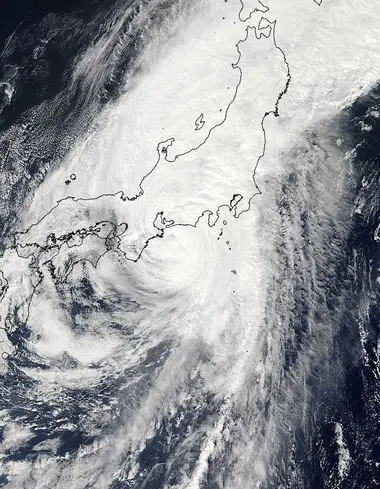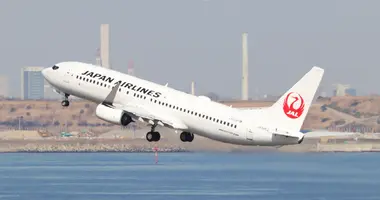Typhoon season in Japan 台風
- Published on : 17/08/2024
- by : GC
- Youtube
Late summer storms
Different names are used across the world when talking about tropical cyclones. In the North Atlantic region, we call them hurricanes. In Asia, the term used is typhoon. In Japanese, it's pronounced taifu.
Typhoon season
Summer continues to be the rainy season in typhoon-prone regions, particularly in the Western Pacific. This year's typhoons got off to a late start, but their activity generally intensifies from August onwards. Strong winds often accompany heavy rainfall, and when these winds exceed 117 km/h, we speak of typhoons.
Understanding typhoons
Tropical cyclones, known as typhoons in Asia, are powerful tropical storms that can cause considerable damage. These storms generally form in the north-west Pacific and can reach Japan with winds sometimes exceeding 200 kilometers per hour, accompanied by torrential rain and destructive waves. In Japanese, the word “taifû” refers to these storms, which can be as dangerous as they are fascinating.
When is typhoon season in Japan?
Traditionally, Japan's typhoon season begins in June and ends in October, with peak activity between August and September. However, the effects of climate change are being felt, making typhoon seasons longer and sometimes more intense. For example, in 2023, several typhoons hit Japan until November, a rare phenomenon that could become more frequent in the years to come.
During this period, it is not uncommon for certain regions of Japan to experience several typhoons in the space of a few weeks. The islands of Kyushu, Shikoku and Okinawa are often the hardest hit, but no region is totally immune.
Your stay with Japan Experience
In the event of a typhoon during your stay in Japan, it's essential to stay informed and take precautions to ensure your safety. Japan Experience is here to support you in these difficult times. If weather conditions disrupt your travel plans, whether by train, plane or bus, you can rely on our helpline for advice and support.
We'll help you check rail traffic conditions via Google Maps or mobile apps, and guide you through the information you need for your flight. In the event of cancellation, we'll be at your side to find solutions, whether it's to reorganize your itinerary. In the event of cancellation of an activity scheduled in your program, we will contact you. Refunds will depend on whether the activity is ticketed or non-ticketed.
Finally, if you have to cancel your accommodation due to a typhoon, we will assist you in finding new accommodation, handling refunds and new bookings. Our priority is to ensure that your experience in Japan runs as smoothly as possible, even in the face of unforeseen weather conditions.
How to prepare for typhoon season
If you're planning to visit Japan during typhoon season, careful preparation is essential to ensure your safety and comfort. Here are some essential tips:
- Plan Indoor Activities: Typhoons can bring dangerous weather conditions, making outdoor activities impossible. Plan visits to museums, temples or shopping malls that will allow you to discover Japanese culture sheltered from the elements.
- Follow weather updates: Check weather forecasts daily via mobile applications or dedicated websites. Local TV stations also broadcast warnings in several languages. In the event of a typhoon warning, scrupulously follow the instructions of local authorities.
- Prepare an Emergency Kit: Always carry an emergency kit containing water, non-perishable food, medicines, flashlights, spare batteries and important documents. This kit will come in handy in the event of service interruption or forced confinement.
- Stay informed: Typhoons can cause major transport disruptions. Check flights, trains and roads regularly. If a typhoon is approaching, we recommend staying indoors and avoiding all non-essential travel.
Safety in Japan: Beyond Typhoons
Japan is world-renowned for its safety, but it is also subject to other natural hazards, such as earthquakes and tsunamis. Although Japan's infrastructure is among the most resilient in the world, it's crucial to know what to do in the event of an earthquake. The Japanese government provides resources for learning how to react in the event of an earthquake, whether in your accommodation or outside.
Here are a few precautions to take:
Identify tefuge areas: Most Japanese cities have special refuge areas in the event of an earthquake or tsunami. Find out where these zones are located near where you're staying.
- Follow evacuation drills: Take part in evacuation drills if you're staying in a high-risk area. This will help you react appropriately in the event of an emergency.
- Keep an emergency bag: In addition to a typhoon emergency kit, a bag containing essentials, a change of clothes and basic necessities can be useful in the event of a rapid evacuation.
Traveling to Japan during typhoon season requires extra preparation, but with the right information and planning, you can enjoy your stay while staying safe. Whether you're drawn to Japan's breathtaking nature, rich culture or delicious cuisine, keep these tips in mind to sail safely through the potential vagaries of Japanese weather.
And above all, don't forget: Japan remains one of the safest destinations in the world. If you are well prepared, you can enjoy an enriching experience while minimizing the risks associated with climatic and seismic hazards.
Assistance
- Contact your local embassy.
- Use NTT's emergency line: the Japanese telephone operator allows you to leave a recorded message on its emergency line (171) to inform your loved ones of your situation and facilitate the search. If the telephone network is saturated, the operator will make the use of all phone booths free of charge.
- Of course, you can also get in touch with Japan Experience, and we'll help you with your travel arrangements.













